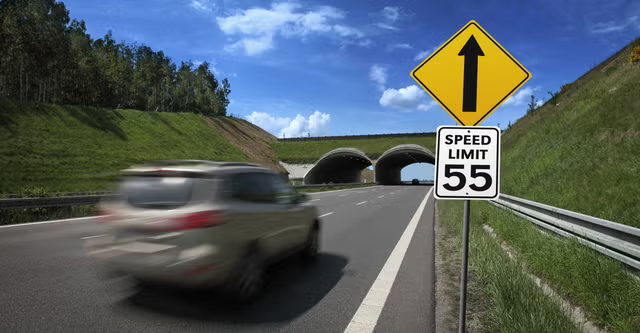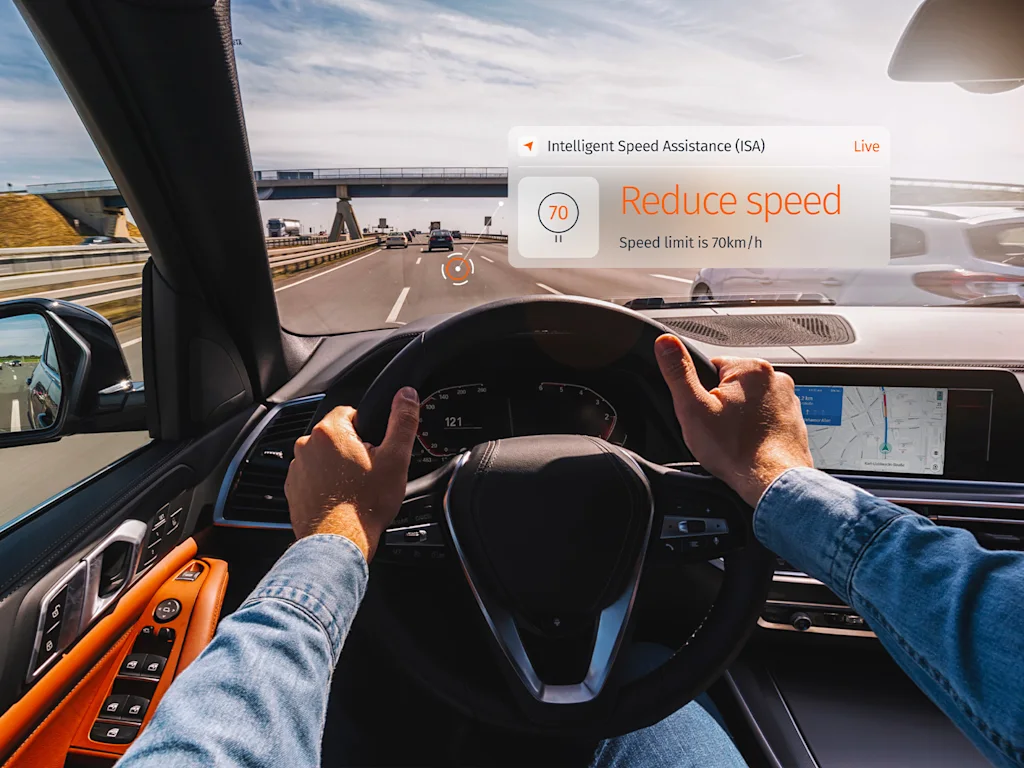Speeding remains a top cause of crashes. That’s why more vehicles now come equipped with limiters. These systems cap speed automatically, cutting risk for everyone—behind the wheel and beyond it.
Not all speed limiters operate the same way. Some just cap speed quietly in the background. Others actively adjust performance based on conditions. Knowing the difference matters—especially if you run a fleet or work in high-risk environments.
✅Key Takeaway
Passive speed limiters stick to a single, preset speed. They’re simple, cost-effective, and work well in predictable driving conditions. Active limiters take it further.
They pull real-time GPS data to adjust speed based on where the vehicle is—slowing down near schools, sharp turns, or busy zones. If you need basic control, passive may be enough. But for dynamic environments, active systems bring the flexibility that makes a difference.
What Are Speed Limiters?
A speed limiter—also called a speed governor—caps how fast a vehicle can go. Whether it’s in a bus, truck, or taxi, the purpose is simple: reduce risk and protect lives.
In many places, these devices aren’t optional anymore. Countries like the UAE, India, and Saudi Arabia mandate them for certain commercial vehicles as part of broader road safety laws.
Speed limiters often pair with GPS tracking and fleet management tools. They come in two main types—passive and active—each playing a different role in keeping speed in check.
Passive Speed Limiters

How Passive Speed Limiters Work
Passive speed limiters are straightforward and dependable. They’re typically mechanical or electronic and hold a fixed top speed. Once the vehicle hits that mark, it won’t go faster—no matter the road, weather, or terrain.
It’s like a ceiling fan locked at level 3. No matter how hot it gets, it won’t spin any faster.
Use Cases & Benefits
Passive limiters are great for:
- School buses
- Delivery fleets
- Basic commercial vehicles
They are:
- Easy to install
- Low-cost
- Very reliable
Because of their simplicity, passive limiters are often chosen by companies looking for basic speed control without the need for real-time adjustments.
Limitations
However, they do have downsides:
- They don’t adjust to changes in road conditions.
- They don’t consider terrain or traffic flow.
- They offer no real-time data to fleet managers.
This can make them less effective in cities with mixed speed zones or hilly areas where more control is needed.
Active Speed Limiters

How Active Speed Limiters Work
Active speed limiters are more advanced. These systems use GPS technology, terrain recognition, and sometimes even camera inputs to adjust the speed limit dynamically.
Take an active limiter: it can slow a vehicle as it enters a school zone or starts down a steep grade. These systems pull live data and adjust limits on the fly—sometimes based on the time, sometimes on local traffic laws. No guesswork, just automatic control.
Resolute Dynamics, a leader in this technology, offers terrain-based Dual Speed Limiters that automatically switch limits between city driving and highway routes.
Features & Benefits
Active systems offer:
- Real-time speed control
- GPS-based geofencing
- Terrain-adaptive settings
- Fleet tracking integration
They help reduce fuel usage, improve safety in high-risk areas, and even record speed history for compliance checks or training.
Ideal Applications
These systems are best suited for:
- Public transport fleets
- Intercity logistics
- Hazardous material carriers
- Government-regulated fleets
Passive vs. Active Speed Limiters: Quick Comparison
| Feature | Passive Limiter | Active Limiter |
| Speed Setting | Fixed | Dynamic / Real-Time |
| Technology Used | Mechanical / Electronic | GPS, Terrain-Based, IoT |
| Real-Time Adjustments | ❌ No | ✅ Yes |
| Cost | 💲 Lower | 💲💲 Higher |
| Best Use | School buses, local delivery | Commercial fleets, high-risk zones |
| Integration With Tracking | ❌ Limited | ✅ Full integration |
| Compliance Support | Basic | Advanced (Data logs, alerts) |
Which One Should You Choose?
Deciding between passive and active limiters depends on how your vehicles run, where they go, and the safety rules you’re working under. One size doesn’t fit all.
When Passive Speed Limiters Make Sense
If your vehicles mostly travel on:
- Flat highways
- Fixed daily routes
- Low-speed urban roads
If location or terrain isn’t a factor, a passive limiter usually does the job. It caps speed at a fixed number—say, 80 km/h—and won’t budge, no matter the road. Simple, steady, and cost-effective, which makes it a go-to for:
- Small delivery fleets
- Local school buses
- Older commercial vehicles
But they don’t adapt—what you program is what you get.
When Active Speed Limiters Are the Better Fit
Now, if your vehicles travel across:
- Busy cities
- Variable speed zones
- Steep or mountainous areas
…then you need something smarter. Active speed limiters use GPS, terrain recognition, and real-time data to adjust the speed automatically based on:
- Location (e.g., school zones, construction sites)
Road type (city streets vs. highways) - Driving conditions (e.g., inclines or declines)
They’re especially useful for:
- Fleet operators
- Passenger buses
- Trucks hauling sensitive cargo
- Companies needing legal compliance & data logs
So, if safety, adaptability, or legal reporting are top priorities, active systems are the better long-term investment.
Hybrid Option: Dual Speed Limiters
Resolute Dynamics offers a smart middle-ground: the Dual Speed Limiter.
This system combines both passive and active features:
- It allows pre-set speed limits like a passive limiter.
- But it also switches between limits based on terrain or route, like an active one.
This makes it ideal for companies that want terrain-adaptive safety without full GPS automation.
In Short:
- Use passive if you want simple, fixed speed control.
- Choose active if you need dynamic, GPS-based speed adjustment.
- Consider dual limiters for blended environments with mixed driving conditions.
How Leading Companies Use Them
Resolute Dynamics, for example, offers:
- Speed Limiter / Speed Governor for fixed-speed applications
- Dual Speed Limiter / Multi Speed Limiter with terrain-based controls
- School Bus Safety Solutions designed to protect students using regulated speeds
With certifications, custom options, and support across the Middle East, Africa, and Asia, they’ve set a new standard in automotive electronic safety systems.
FAQs
Are speed limiters required by law?
Yes, in many countries, especially for commercial vehicles.
Can passive limiters be upgraded?
Yes. In some cases, passive systems can be enhanced with GPS-based modules.
Do speed limiters affect fuel economy?
Yes, keeping speeds in check helps reduce fuel usage and emissions.
Conclusion
Speed limiters aren’t optional extras anymore. They’re core tools for safer driving, lower fuel use, and meeting legal requirements without the headache.
Whether you choose a basic passive system or a GPS-enabled setup with more brains, picking the right limiter matters. And if you’re working with Resolute Dynamics, you’re not just buying hardware—you’re getting proven tech built for real-world safety and control.
